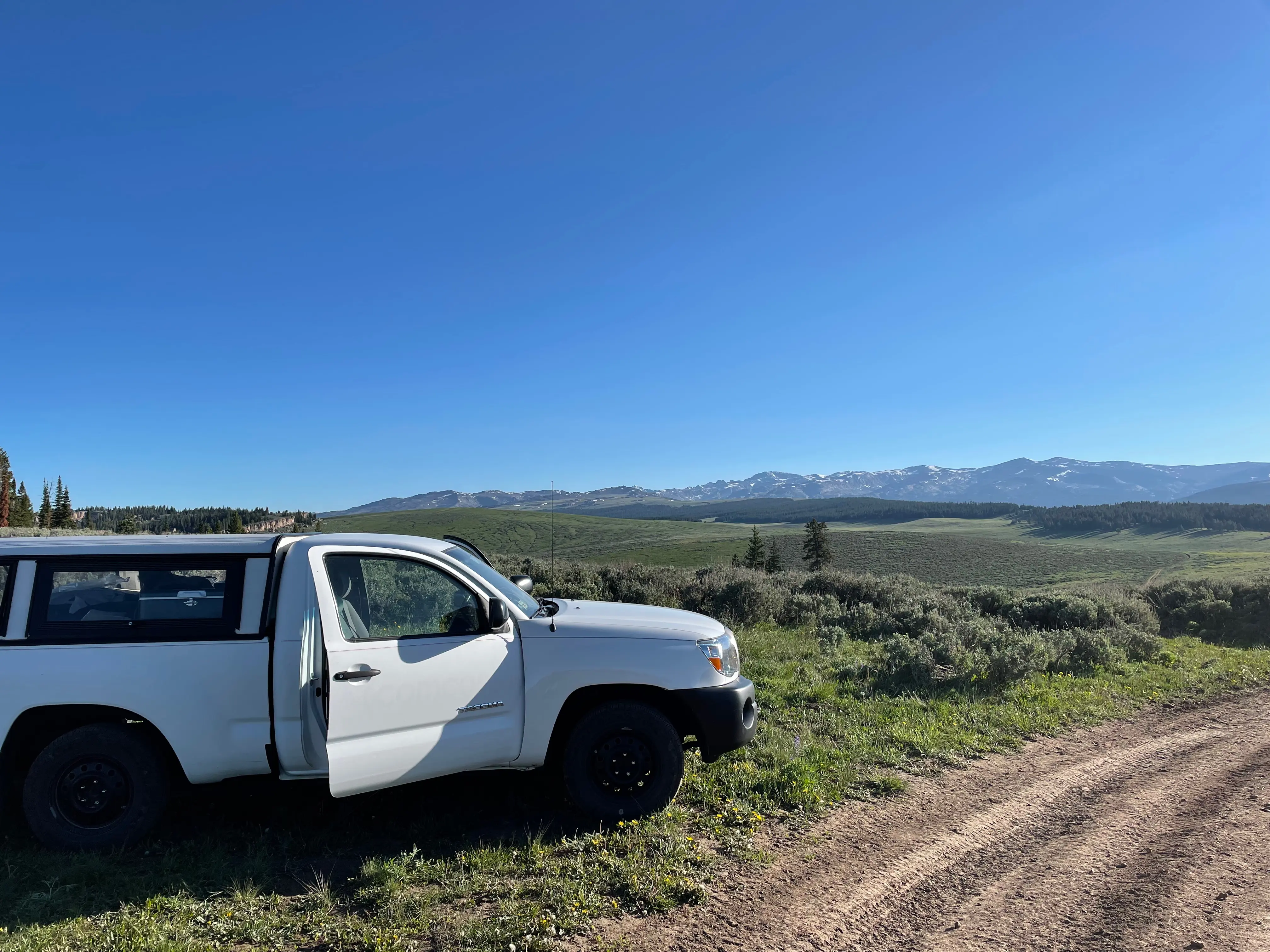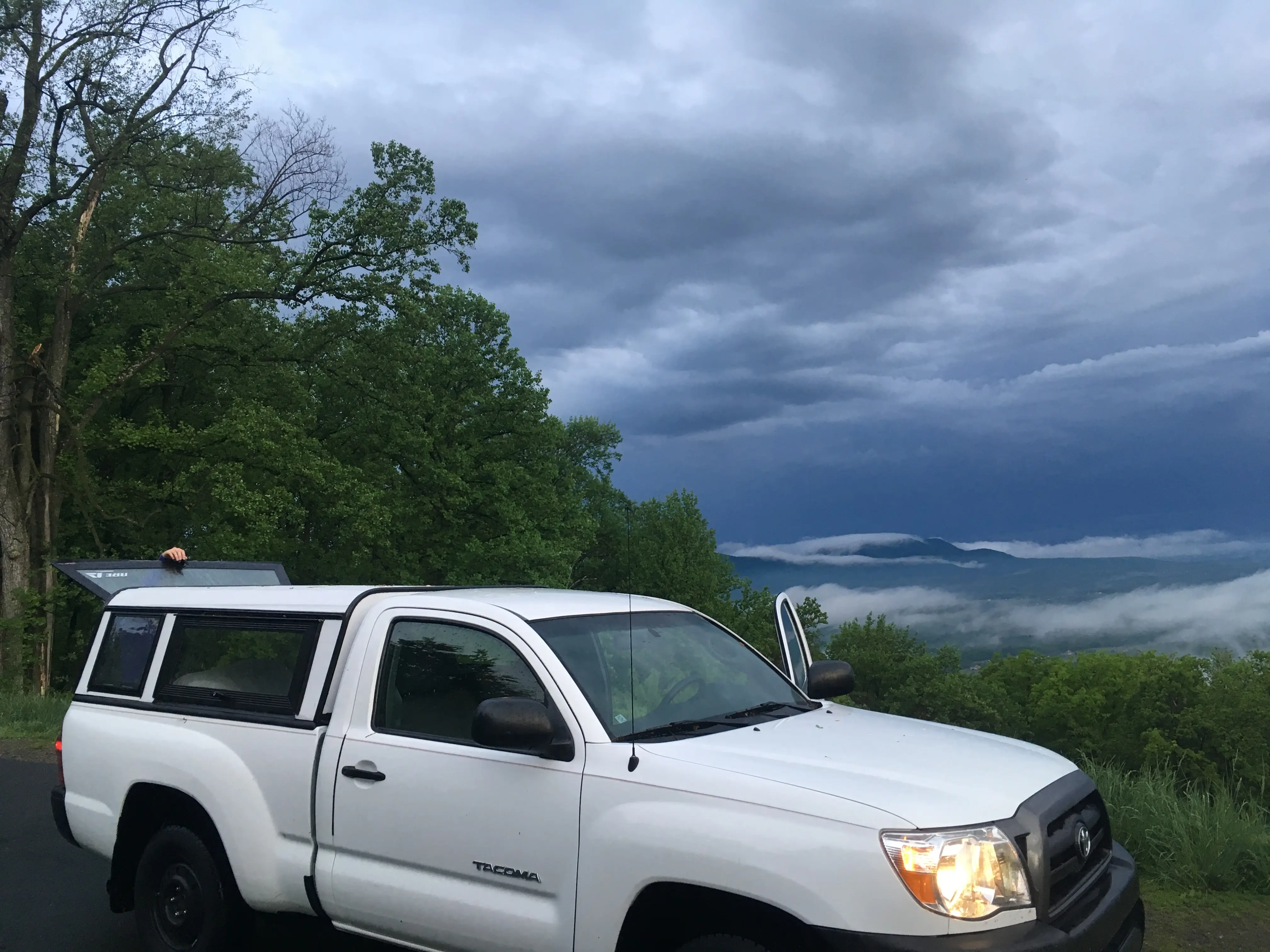I got my truck when I was 20 years old, studying computer science at a small Christian liberal arts school in Grand Rapids, Michigan. It was a 2006 Toyota Tacoma, replacing a 1997 manual Toyota Corolla that had seized up after 275,000 miles. On the first day, I decided to park it in the small 1920s single-stall garage behind the house I was living in. I dented the wheel fender trying to turn into that tight space. That dent would be the first of many my truck would receive over the next 10 years.
A truck is an American ideal carefully crafted by marketers over the past 80 years. Originally, a pickup truck was a farm utility vehicle. Its minimalism was what made early trucks popular. My great-grandpa bought one of the original pickup trucks, a Ford Model T. While it was definitely used for work around his farm, its most memorable use was transporting his large family to church on Sundays.
Fast forward several decades, and that once-a-week role of driving the family has evolved into the primary use case. A marketing focus on minimalism and utility has been replaced with a focus on more abstract, masculine concepts like "built tough" and "hardworking." Trucks now have MSRPs ranging from $25,000 to well over $100,000. Americans have become wealthier than ever, and most of us can enjoy driving vehicles that represent the abstract ideals of the person we’d like to be. In the case of trucks, it’s someone who is hardworking and tough.
My Tacoma embodied the original truck ideal as it barely still existed in 2006. It was a regular cab—you couldn’t put a car seat in it. It had a single bench seat that could uncomfortably fit three people. It had roll-down windows, broken A/C, and black steel wheels without hubcaps. Its white paint was covered in scratches and dents, and the clear coat had mostly worn away by the time I got it. It was the cheapest trim Toyota made specifically for fleet vehicles. Mine had originally been a Comcast service vehicle. I loved this truck—it was perfect.
There was no tint on the windows, and driving it felt like being in a fishbowl, but I loved that. I was an exhibitionist in my truck, having my girlfriend play with my hair in my base-model, 4-cylinder, 2WD Toyota Tacoma.
When you have a motorcycle, you’ll get attention from drunk girls. With a base-model Tacoma, you’ll get attention from 40- to 50-year-old men reminiscing about how they had one in the '90s. They’d talk about going fishing with friends and all piling into one. These men were maybe remembering the freedom they had before kids, mortgages, and good jobs.
I moved to Washington, DC, when I was 23. I lived in a 250-square-foot studio apartment in Adams Morgan. I couldn’t afford to take my truck and left it parked in my parents’ driveway. I lived the urbanist’s dream in DC: walking to work most days and taking the Metro when the weather was bad. I enjoyed the nice bars, restaurants, and tiny grocers you find in a city like that. It was great—but most urbanists don’t actually understand truck. Truck is why Americans don’t want the urbanist’s dream.
In DC, I started living with the girlfriend I used to drive around in my truck. She didn’t like the city and wanted to leave as soon as she arrived. We rented cars to drive to Shenandoah and Jefferson National Forest for backpacking trips. Eventually, I found a parking space to rent up in Petworth and brought my truck there. The only thing better than living in an urbanist’s paradise is living in an urbanist’s paradise with a truck. I would wake up early on Sunday mornings to get my truck, load up my mountain bike, and go wardriving through DC’s downtown streets, blasting Viagra Boys on my way to trailheads in Northern Virginia. Truck means escape. On weekends when I wasn’t wardriving around the Mall, I’d take my girlfriend camping. We’d sleep in the truck. It was dreamy—this cute girl cuddling up in the truck topper, maybe with a foot peeking out. She loved that.
I just sold that truck to my grandpa, who quickly sold it to my uncle, who’s giving it to my cousin. It’s a good cause 20-year-olds should have cheap trucks to drive around. I got a newer version of the same truck: a 2009 Tacoma. Its purity is compromised, though, since this new one has an extended cab, and you’re legally allowed to put car seats in the back row. My life is over. My girlfriend is now my wife, and we’re talking about starting a family. I’ve been gelded by society. I’m going to have a mortgage soon and become a slave to the bank as well. Pathetic. But at least I have a truck.

